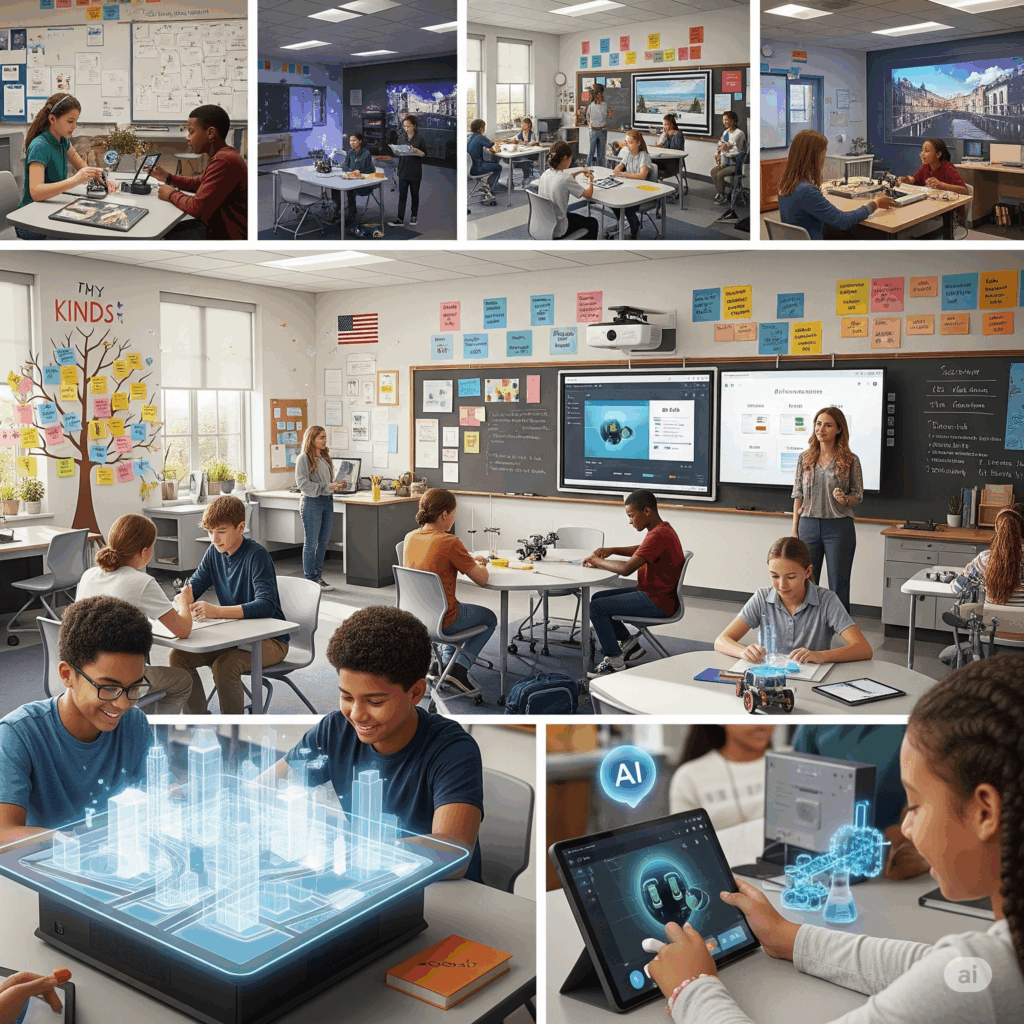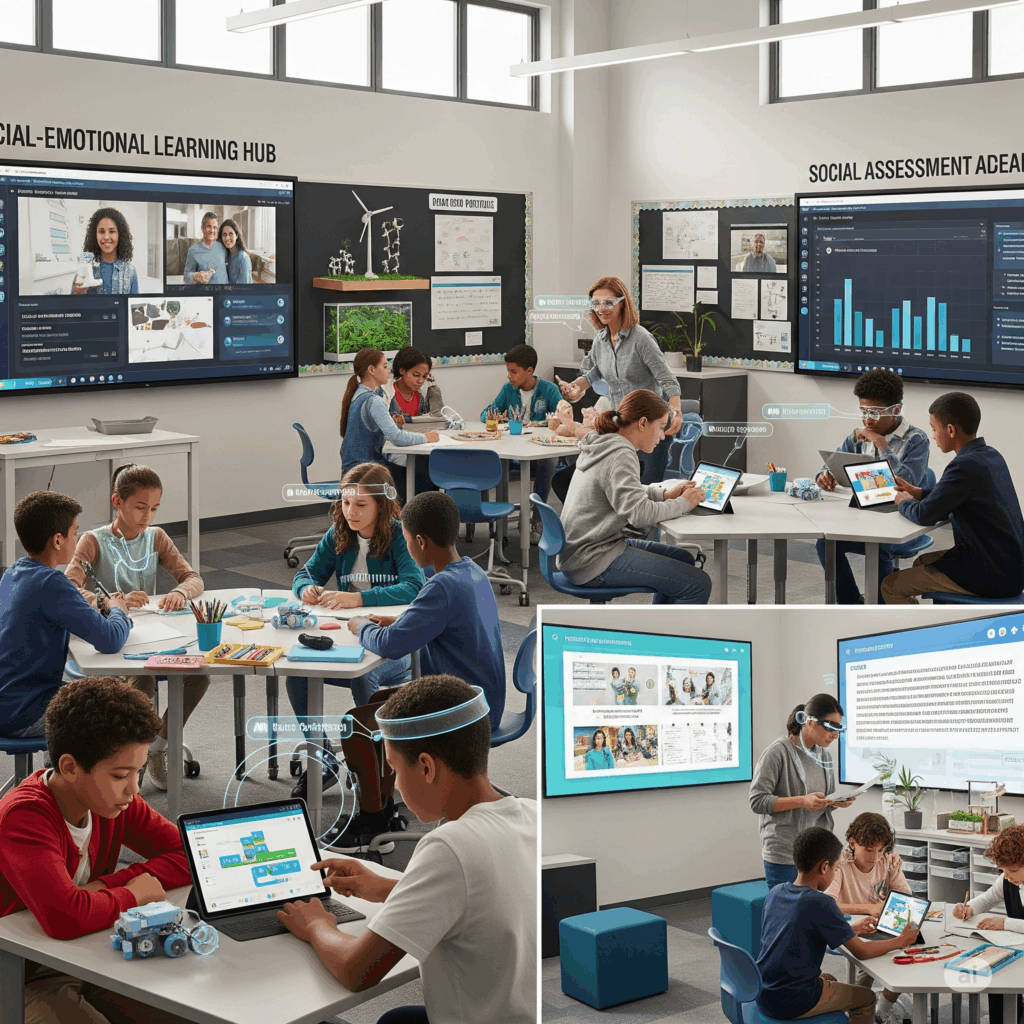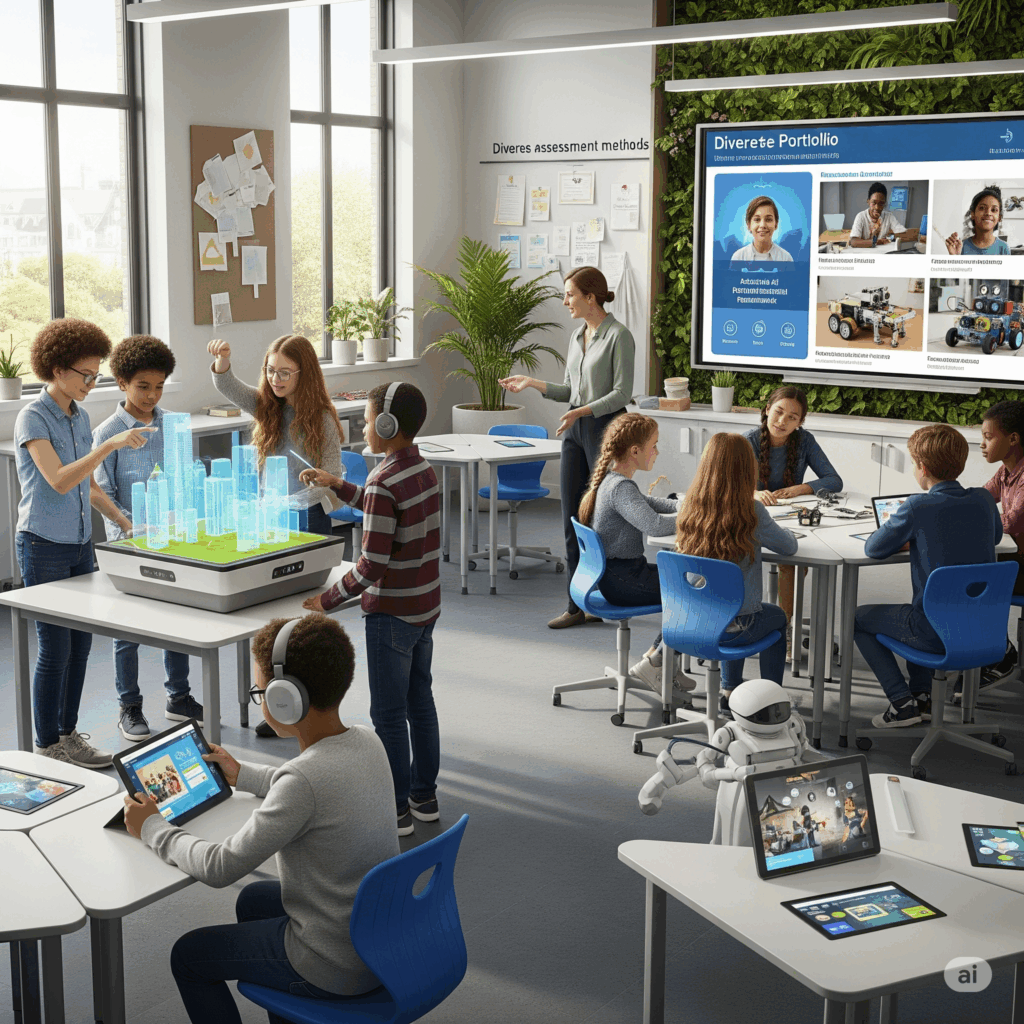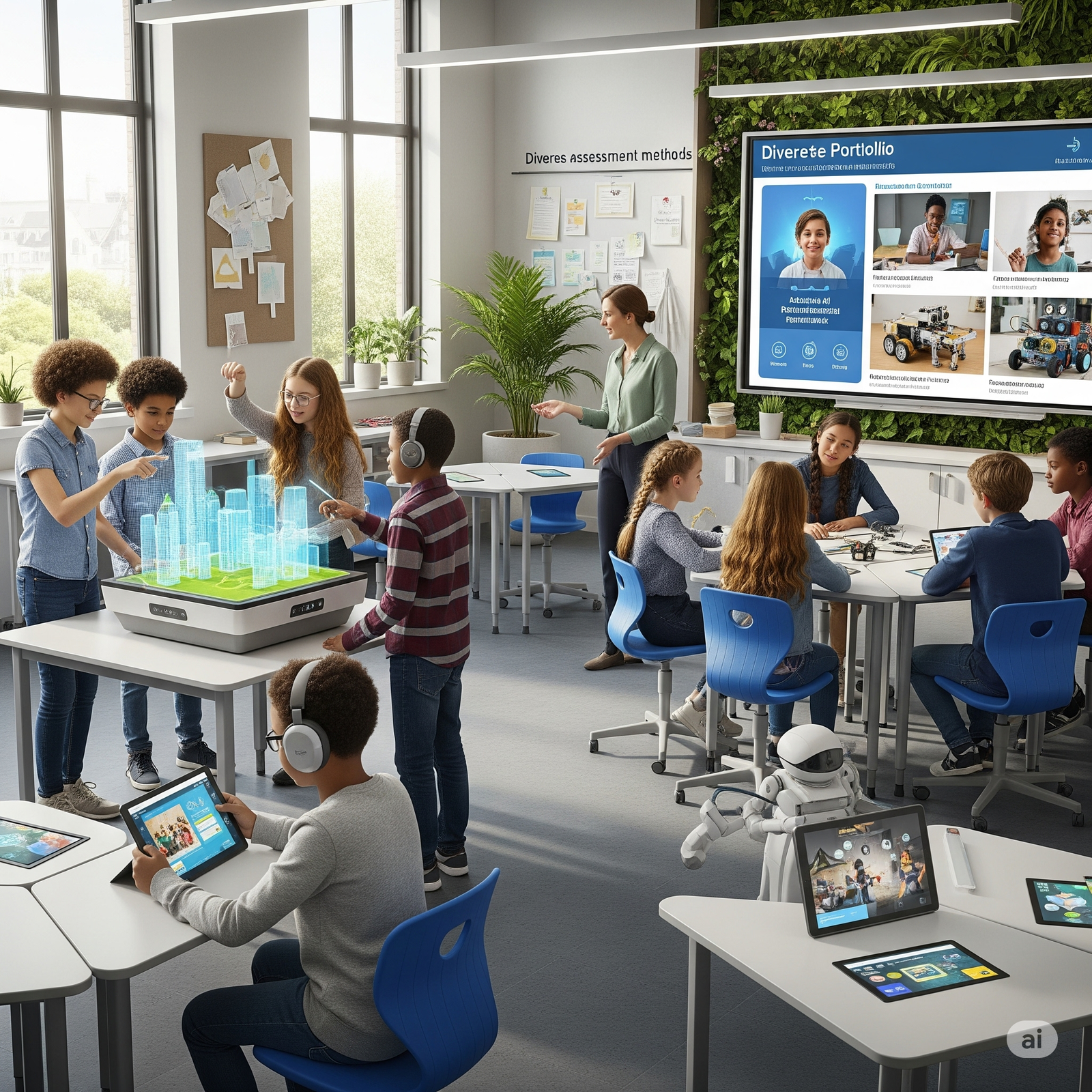The landscape of American education is in constant flux, driven by technological advancements, evolving pedagogical philosophies, and a growing understanding of how students learn best. Gone are the days of rote memorization and passive reception of information. Today, a wave of emerging trends and innovations is reshaping the learning experience in American classrooms, promising a future that is more personalized, engaging, and effective.
This article delves into some of the key forces driving this transformation, exploring the innovative approaches and technologies that are poised to define the future of learning in the United States.

1. Personalized Learning: Tailoring Education to Individual Needs
One of the most significant shifts in educational thinking is the move towards personalized learning. Recognizing that each student learns at their own pace, possesses unique strengths and weaknesses, and has distinct learning styles, educators are increasingly adopting strategies that cater to individual needs.
- Adaptive Technologies: Artificial intelligence (AI) powered platforms and software are playing a crucial role in delivering personalized learning experiences. These adaptive tools can assess a student’s understanding in real-time, adjusting the difficulty and content of lessons accordingly. They provide targeted feedback and identify areas where a student needs extra support or can be challenged further.
- Flexible Pathways and Pacing: Traditional lockstep curricula are giving way to more flexible pathways. Students may have more agency in choosing their learning activities, the order in which they learn concepts, and the pace at which they progress. This allows for deeper engagement and mastery of content.
- Differentiated Instruction: Teachers are employing a variety of instructional techniques to meet the diverse needs of their students within the same classroom. This can involve offering different levels of support, providing varied resources, and allowing students to demonstrate their understanding through multiple modalities.
- Learner Profiles: Comprehensive learner profiles, encompassing academic data, learning preferences, interests, and goals, are being used to inform instructional decisions and create more individualized learning plans.
2. Technology Integration: Empowering Learning and Expanding Access
Technology is no longer a separate subject but rather an integral tool woven into the fabric of education. Its pervasive presence is transforming how students learn, collaborate, and access information.
- Interactive Learning Environments: Interactive whiteboards, tablets, and laptops are commonplace, facilitating engaging and dynamic lessons. Educational apps and software provide interactive simulations, virtual field trips, and gamified learning experiences.
- Online and Blended Learning: Online learning platforms are expanding access to education, offering flexible options for students in diverse circumstances. Blended learning models, combining online and in-person instruction, leverage the benefits of both formats, providing personalized learning opportunities and face-to-face interaction.
- Digital Resources and Content: The internet provides a vast repository of educational resources, from open educational resources (OER) to digital libraries and multimedia content. This abundance of information allows for deeper exploration of topics and access to diverse perspectives.
- Coding and Computational Thinking: Recognizing the importance of digital literacy in the 21st century, coding and computational thinking are increasingly being integrated into the curriculum across various subjects. This equips students with problem-solving skills, logical reasoning, and an understanding of the technology that shapes their world.

3. Project-Based and Inquiry-Based Learning: Fostering Deeper Engagement and Critical Thinking
Shifting away from passive learning, educators are embracing more active and student-centered approaches like project-based learning (PBL) and inquiry-based learning.
- Project-Based Learning (PBL): PBL involves students working on real-world projects that require them to apply their knowledge and skills to solve authentic problems. This fosters critical thinking, collaboration, communication, and creativity, while making learning more relevant and engaging.
- Inquiry-Based Learning: This approach encourages students to ask questions, investigate topics of interest, and construct their own understanding through exploration and research. It cultivates curiosity, critical thinking, and a lifelong love of learning.
- Problem-Based Learning: Similar to PBL, problem-based learning presents students with complex, ill-structured problems that they must work collaboratively to solve. This develops problem-solving skills, analytical thinking, and teamwork.
4. Social-Emotional Learning (SEL): Nurturing Well-Rounded Individuals
Recognizing that academic success is intertwined with emotional well-being, there is a growing emphasis on integrating social-emotional learning (SEL) into the classroom.
- Developing Key Skills: SEL focuses on developing crucial skills such as self-awareness, self-management, social awareness, relationship skills, and responsible decision-making. These skills contribute to students’ academic performance, mental health, and overall well-being.
- Creating Supportive School Climates: Schools are increasingly focusing on creating positive and inclusive learning environments where students feel safe, respected, and supported. This involves fostering strong relationships between students and teachers and promoting a sense of belonging.
- Mindfulness and Well-being Initiatives: Practices like mindfulness and social-emotional curricula are being implemented to help students manage stress, regulate emotions, and develop empathy.

5. Assessment for Learning: Moving Beyond Standardized Tests
The future of assessment is moving beyond high-stakes standardized tests towards more formative and authentic measures that provide meaningful feedback and support student growth.
- Formative Assessment: Ongoing assessment practices, such as classroom discussions, quick quizzes, and feedback on student work, are being used to monitor student learning in real-time and adjust instruction accordingly.
- Performance-Based Assessments: These assessments require students to demonstrate their learning through authentic tasks, such as presentations, projects, and portfolios. They offer a more holistic view of student understanding and skills.
- Digital Portfolios: Electronic portfolios allow students to showcase their work over time, reflect on their learning, and demonstrate their progress in various areas.
- Competency-Based Assessment: This approach focuses on evaluating whether students have mastered specific competencies or skills, rather than relying solely on grades or test scores.
6. Collaboration and Global Connections: Preparing Students for an Interconnected World
In an increasingly interconnected world, fostering collaboration and global awareness is paramount.
- Collaborative Learning: Group projects, peer teaching, and online collaboration tools are being used to encourage teamwork, communication, and shared problem-solving.
- Global Partnerships and Virtual Exchange: Technology enables students to connect with peers from around the world, fostering cross-cultural understanding and exposing them to diverse perspectives. Virtual exchange programs and collaborative online projects are becoming more common.
- Emphasis on Interdisciplinary Learning: Breaking down traditional subject silos, interdisciplinary approaches encourage students to see the connections between different fields of knowledge and apply their learning in more holistic ways.
Challenges and Opportunities
While these emerging trends hold immense promise for the future of learning, their successful implementation also presents challenges. Ensuring equitable access to technology and high-quality digital resources, providing adequate professional development for educators to embrace new pedagogies, and addressing concerns about data privacy and digital citizenship are crucial considerations.
However, the opportunities are vast. By embracing these innovations, American classrooms can become more engaging, personalized, and effective learning environments that empower students to develop the knowledge, skills, and dispositions they need to thrive in the 21st century and beyond. The future of learning is dynamic and evolving, and the commitment to continuous improvement and student-centered approaches will be key to unlocking its full potential.










